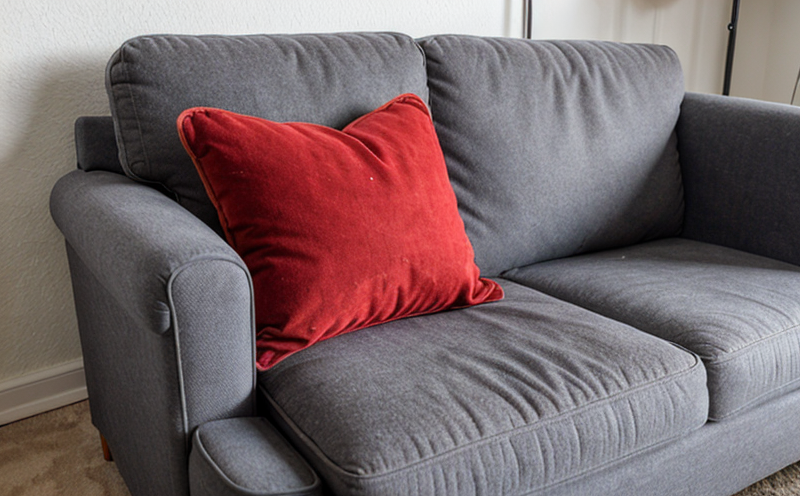BS EN 14465 Fabric Specifications for Upholstery Testing
The British Standard and European Norm (BS EN) 14465 is a crucial document specifying the fabric specifications required for upholstery. This standard ensures that fabrics used in furniture are durable, aesthetically pleasing, and safe for end-users. It covers various aspects of fabric performance including colorfastness to light, washing, perspiration, and rubbing; seam slippage resistance; and dimensional stability after washing.
The standards apply to a wide range of fabrics used in upholstery, from cotton and polyester blends to more innovative materials like spandex or Lycra. Compliance with these specifications is essential for manufacturers aiming to produce high-quality furniture that meets both consumer expectations and regulatory requirements.
Testing under BS EN 14465 involves several key procedures designed to evaluate the durability and longevity of fabrics intended for use in upholstery applications:
Colorfastness Testing: This assesses how well a fabric retains its color after exposure to various factors such as light, washing, and rubbing. The standard specifies test methods like the AATCC Home D-12 and AATCC Home TM 308 for determining colorfastness to light and home laundering.
Seam Slippage Resistance: Seam slippage can lead to the unraveling of seams, reducing the overall strength and durability of a piece of furniture. The standard includes tests like AATCC Home TM 162-2008 to evaluate seam slippage resistance.
Dimensional Stability: This test checks how much a fabric shrinks or stretches after washing, which is critical for maintaining the shape and fit of furniture. The standard specifies procedures such as AATCC Home TM 132-2015 to assess dimensional stability.
Permeability: This property measures how easily air, water vapor, or other substances pass through a fabric. For upholstery fabrics, this is important for breathability and comfort. The standard includes tests like AATCC Home TM 206-2018 to evaluate permeability.
Proper compliance with BS EN 14465 helps ensure that the fabric used in furniture not only meets aesthetic requirements but also provides long-lasting performance. By adhering to these specifications, manufacturers can enhance customer satisfaction and meet industry standards.
The testing process requires specialized equipment and skilled personnel to accurately simulate real-world conditions under which a fabric will be used. This includes high-temperature washing machines for colorfastness tests and precision measuring devices for dimensional stability checks.
Benefits
The implementation of BS EN 14465 brings numerous benefits to manufacturers, retailers, and end-users:
Enhanced Durability: By ensuring that fabrics meet the specified durability standards, furniture manufacturers can produce products with extended lifespans. This reduces waste and supports sustainable practices.
Better Consumer Satisfaction: Consumers expect high-quality furniture that looks good and lasts long. Meeting BS EN 14465 helps ensure that customers receive products they can trust and enjoy for years to come.
Market Differentiation: Compliance with this standard sets a benchmark of quality, allowing manufacturers to differentiate their products in the competitive furniture market.
Regulatory Compliance: Adhering to international standards ensures that manufacturers are compliant with regulations and can avoid potential legal issues.
Customer Impact and Satisfaction
Customers benefit significantly from furniture manufactured in accordance with BS EN 14465:
Durable Products: Customers receive furniture that is built to withstand the rigors of everyday use, ensuring long-term value.
Aesthetic Appeal
<|im_start|> yanshiren




